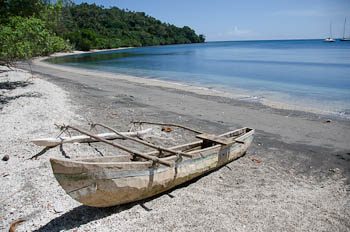
Tenaya
September
2012
Part Two
Lamen Bay, Epi, Vanuatu
| |
| HOME |
| About Tenaya |
| About Us |
| Latest Update |
| Logs from Current Year |
| Logs from Previous Years |
| Katie's View |
| Route Map |
| Links |
| Contact Us |
![]()
September 17, 2012
16 35'. 69S 168 09'.79E
After a week in Port Vila and a night at Matupu Bay in Havannah Harbour on Efate we sailed 81 miles north to Lamen Bay on the island of Epi. SE winds were 16-22 knots, the sky was mostly sunny and the seas moderate.

Lamen Bay is beautiful. It is fairly large with coral along the sides and a sandy bottom in the middle. We're anchored farther out than anyone else, about 500 meters from shore, in 10 meters of water. I looked over the side the day after we arrived to see the anchor perfectly set. That's the clearest water we've had in a long time! Later that afternoon Jim spotted water spouts. Whales! Three humpbacks were slowly passing by.

But the best part of Lamen Bay, for me, is the snorkeling. Dozens of large turtles lounge on the bottom munching grass I can barely see. Sometimes they slowly lift off and swim lazily away.

Once a while I'll be watching some and others will swim into view from another direction. They hardly seem to care when I dive down for a closer look or follow them to the surface when we both need a breath.
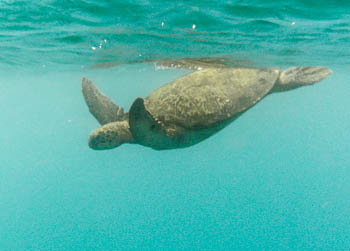
One afternoon as Jim paddled by their boat, our friends, Michael and Christine on New Horizons, told him they'd just seen a dugong while snorkeling. He raced back to Tenaya and we had our gear out in no time. I jumped in the water and finned while he paddled in the direction they pointed.
Although I had my eyes peeled for it, I was surprised to see the bulbous creature creeping along the bottom. What an odd looking animal with its huge curved head and tubby body. They are actually distantly related to elephants and aardvarks. The only thing they have in common with other marine mammals is that they are live completely in the water. It was hovering just above the bottom, slowly propelling itself forward with its whale-like fluke while crawling along using its paddle-shaped forelimbs. All the while nibbling grass and churning up the sand with its fleshy proboscis. I can see why they are called sea cows.

I watched from the surface for a minute or two before I dove down slowly for a better view. He looked at me but did not increase his pace. When I went back to the surface he rose up and surfaced as well, then circled back near me before dropping down to eat some more, remoras still attached.
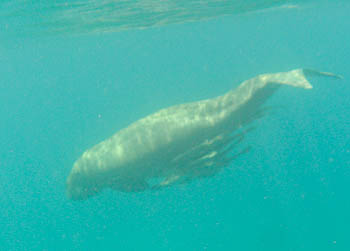
Above the water small planes that have just taken off from the grass runway a few hundred meters away buzz the anchorage as they gain altitude.

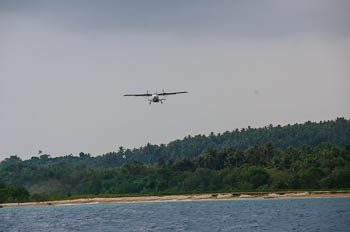
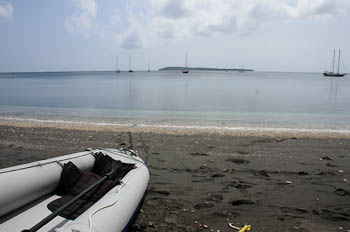
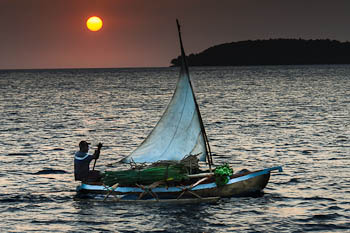
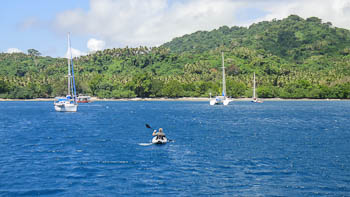
Trees of many types cluster together on the hills surrounding the gently sloping, sandy shore. The friendly people welcomed us warmly, encouraging us to wander around and snorkel wherever we chose. One day we were on shore around midday and saw a lady with covered pots on a table in the market area. I asked if she was selling food. Yes, she was serving rice and fish. For 100 vatu Jim and I shared a tasty meal and had a nice conversation with the lunch crowd.
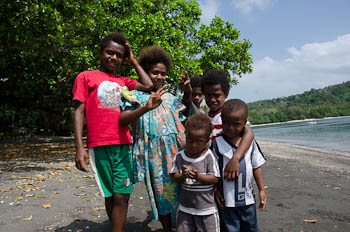
Lamen Bay feels much less primordial and a bit more polished than Port Resolution. Lights shine from houses at night. Dugout canoes and faster pangas make trips back and forth to Lamen Island. People wave but do not stop and want their phones charged.
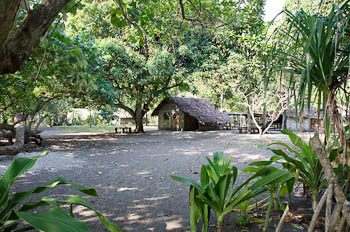
Cargo ships, the Big Sista Ferry and several commercial fishing boats blast through the anchorage at all hours of the day and night. Most are filled with people and freight with no attention paid to a symmetrical waterline. This is an anchorage where the more lights you have showing, the better. And beware - the more you wave to the folks on these boats, the closer the skipper steers the rattletrap to yours!
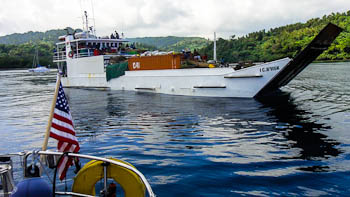

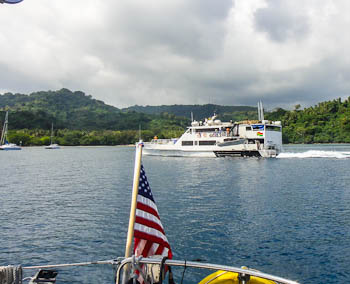

Kim and Will on the aluminium schooner, Sauvage, made friends with Max. Max has a new, clean, fast dugout canoe painted with red and white stripes. Kim suggested it be called the Red Zebra and offered to paint the name on the boat. Great, said Max, but what he really wanted was a fabric sail. The one made of palm fronds was just not fast enough for him. Could Kim help? Of course! A few days later the Red Zebra was sporting a colorful sail, English bunting and a smiling Max.
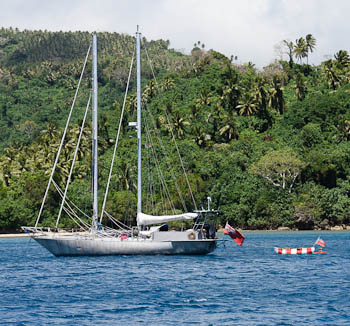

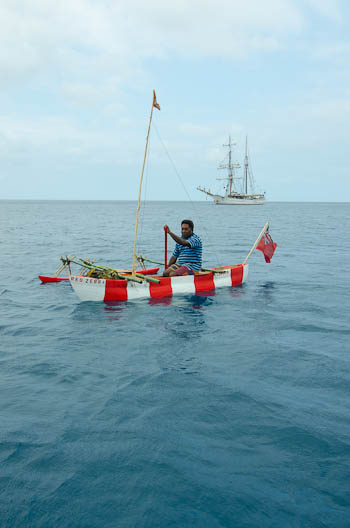
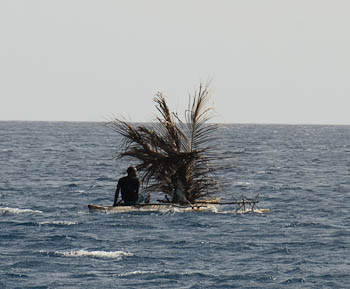
Go to September Part 3 - Ranon, Ambrym, Vanuatu